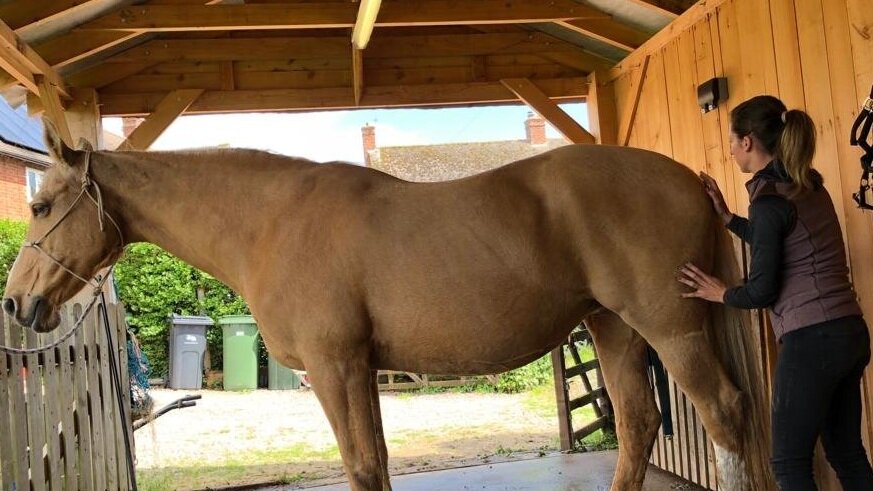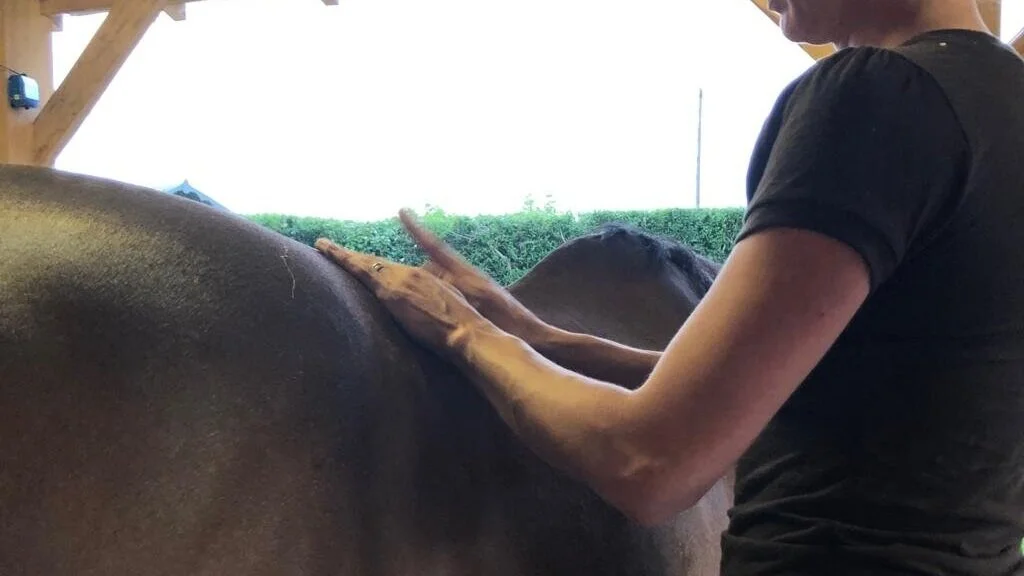Massage Techniques Part 4
Hello and welcome to the final part of my 4 part mini blog series on Equine Massage Techniques.
During this mini blog series I have been discussing some of the hands-on equine massage techniques you will see me use when treating your horse.
Hands-on equine massage forms the very basis of what I do, hence it was what I have wanted to discuss in this first blog series.
If you have missed parts 1 ,2 & 3 of this series they can be found here.
This week I will be talking about the final 3 of the hands-on equine massage techniques.
These are:
Shaking
Deep Fibre Friction
Tapotements
Shaking has a very strong mechanical movement used to increase circulation and help a horse relax an area he is holding tension in.
Shaking can be both soothing and stimulating for the horse, depending on how you apply the technique.
Shaking is a great technique to apply during a warm-up or pre competition massage and is best applied to the larger muscle groups such as the hindquarters.
You can see my applying the technique to this area in the image above.
Deep Fibre Friction consists of small, deep, circular movements applied across the length of the muscle or up and down over a patch of fibrous tissue, used to break down adhesions and scar tissue (fibrosis) over muscular fibres, tendons, ligaments, fascia, joint capsules, and bones.
If I feel such an area during treatment whilst palpating and warming of the muscles I will ensure the area is suitably prepared before performing the technique, this is quite an intense massage technique.
After application it is essential that the area is drained thoroughly with further massage techniques such as wringing and effluerage (find out more about these techniques in part 1 of this blog series)
Tapotements comprise a series of soft blows to the body, done rhythmically.
This technique is used to increase circulation and to energize the body, tapotements are very effective for warming up muscle groups just prior to exercise.
Hacking, clapping and cupping are 3 methods of applying tapotements with your hands, in the image above I am using the clapping technique on the horse’s longissimus dorsi (long back muscle).
This technique can also be applied mechanically with the Thumper® Equine Pro which I will be discussing further in future blogs. Find out more here.
Horses will usually have a strong, soothing feeling of relaxation with the application of tapotements.
Thank you so much for visiting my blog, if you have any questions or would like to book an appointment for horse massage therapy in Worcester and the surrounding areas please do get in contact , I would love to hear from you.
Next week will be the start of a new blog series discussing some of the other therapies I offer alongside hands-on massage. Starting with Myofascial Release.
Thanks so much
Jess x



